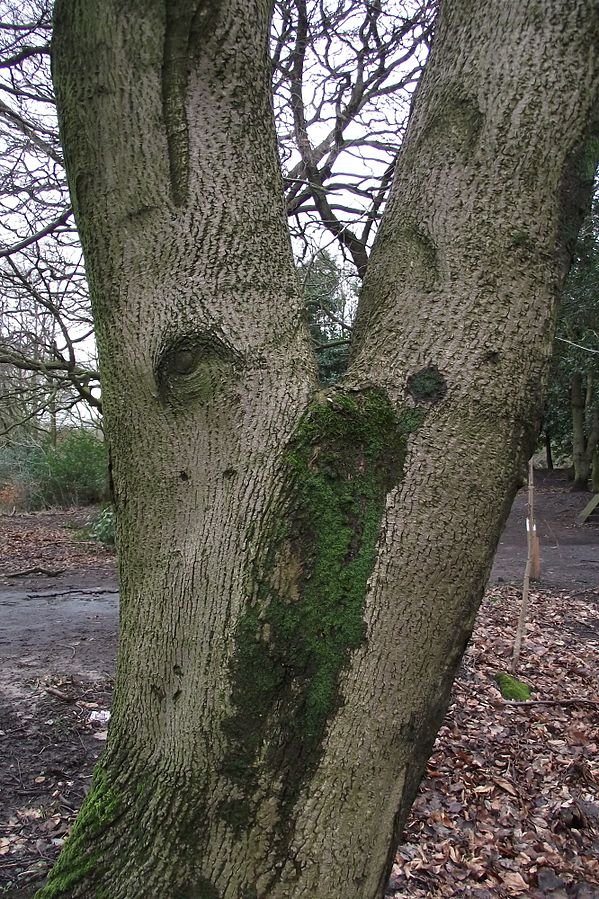I was yearning to say, “No – not that one” to a person who was in front of me in the check-out line at a local garden center. After scanning the rest of the trees on her flatbed cart, I realized that every single tree had the same serious problem. I call it “split leader” but arborists label it “co-dominant stems.” Whatever you call it, it means trouble ahead.
Split leader occurs when two mostly-vertical branches of nearly the same size emerge from a tree’s trunk at the same point. The tree looks like a sling-shot. The proper name for this is bifurcation. Unless you take care of the problem when the tree is very young, the two branches will compete for dominance. As they grow, the bark of the branches will squeeze each other, resulting in a pinched or wrinkled bark that looks like loose elephant skin. This is called included bark and indicates a weak point in the structure. In years to come, these two competitors will part ways – the tree will split, and one half will go down while the other half celebrates an ugly victory. The much-maligned Bradford Pear tree is famous for this problem. You’ve probably seen plenty of them, split asunder, after storms or high winds.
Corrective pruning can remedy this problem on young hardwood trees. The gardener should select one of the two co-dominant branches for partial reduction. Do not attempt to remove the entire limb at one time unless the tree is a young sapling. Instead, cut it back by half and then reduce it even further in another year. This gradual reduction is called subordinating and it serves to slow the growth of the pruned limb. For larger trees, it may take multiple years of pruning to ensure that the tree has one central leader.
The split leader problem is harder to correct when the troubled tree is a conifer. While hardwoods adapt to pruning by activating dormant buds along branches, a needled evergreen is less accommodating. It does not “break bud” or generate new branches from brown wood. This means that removing a split leader will leave a gap in the tree which will remain obvious. The tree won’t fill in. So please, select those Arborvitae and Leyland Cypress with care. A strong central leader will help them resist damage from ice and snow.
This is a Norway Maple with co-dominant leaders. It is far too late for corrective pruning. A split is on the way.
Photo by Duncan R Slater, CC BY-SA 3.0
This conifer has a three way split leader. The two outer leaders should have been removed when it was less than two feet tall.


